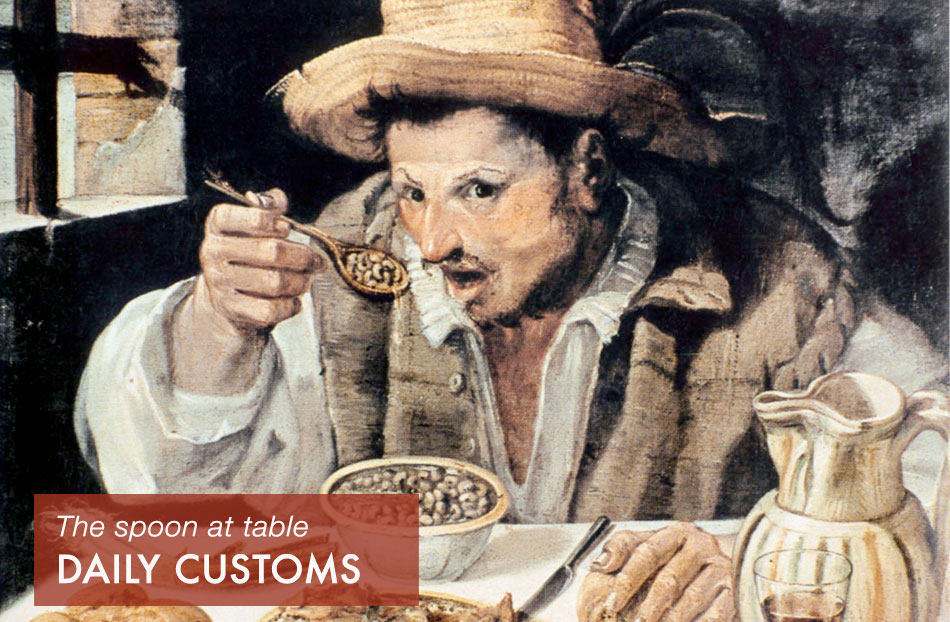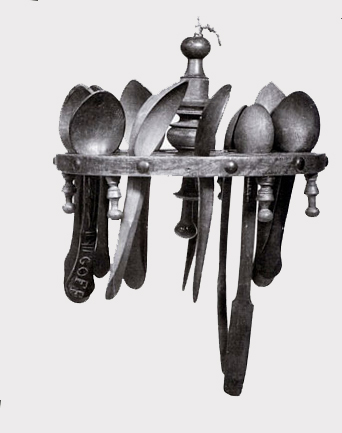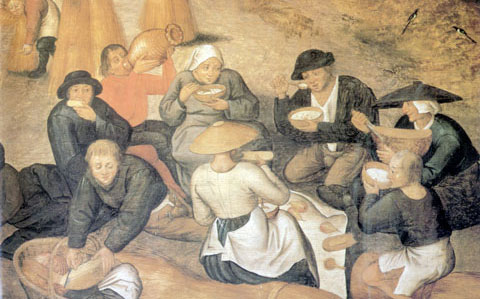

French factory, Hanging spoon holder, 19th century. Paris, Musée National des Arts et Traditions Populaires
Pieter Bruegel the Elder, The Harvesters, 1565, detail. New York, Metropolitan Museum of Art
Top: Annibale Carracci, The Bean Eater, 1583–1584. Rome, Galleria Colonna
Among the lower classes and rural folk, the spoon was perhaps the most important piece of cutlery, particularly suited to the foods they ate: milk, soups, legumes. It was mostly made from wood, a readily available material that was easy to work.
Spoons, like all the other utensils in the rural kitchen, were looked after with care. They were considered precious items by the peasants who had inherited or made them. In their eyes the structure and form of the spoon represented the most obvious solution for performing the function for which they were designed.
Wooden spoons could have a longitudinal bowl, a transversal bowl, which was easier to manoeuvre and bring up to the mouth, or a roughly triangular bowl, suited to scooping and scraping. The handle could be straight or hooked, smooth or decorated, simple in shape or ergonomic.
Wood was later replaced by less perishable materials such as iron, tin, copper and various alloys. Metal spoons frequently had a pointed shape, useful for digging into the food, and sharp edges, useful for cutting.

